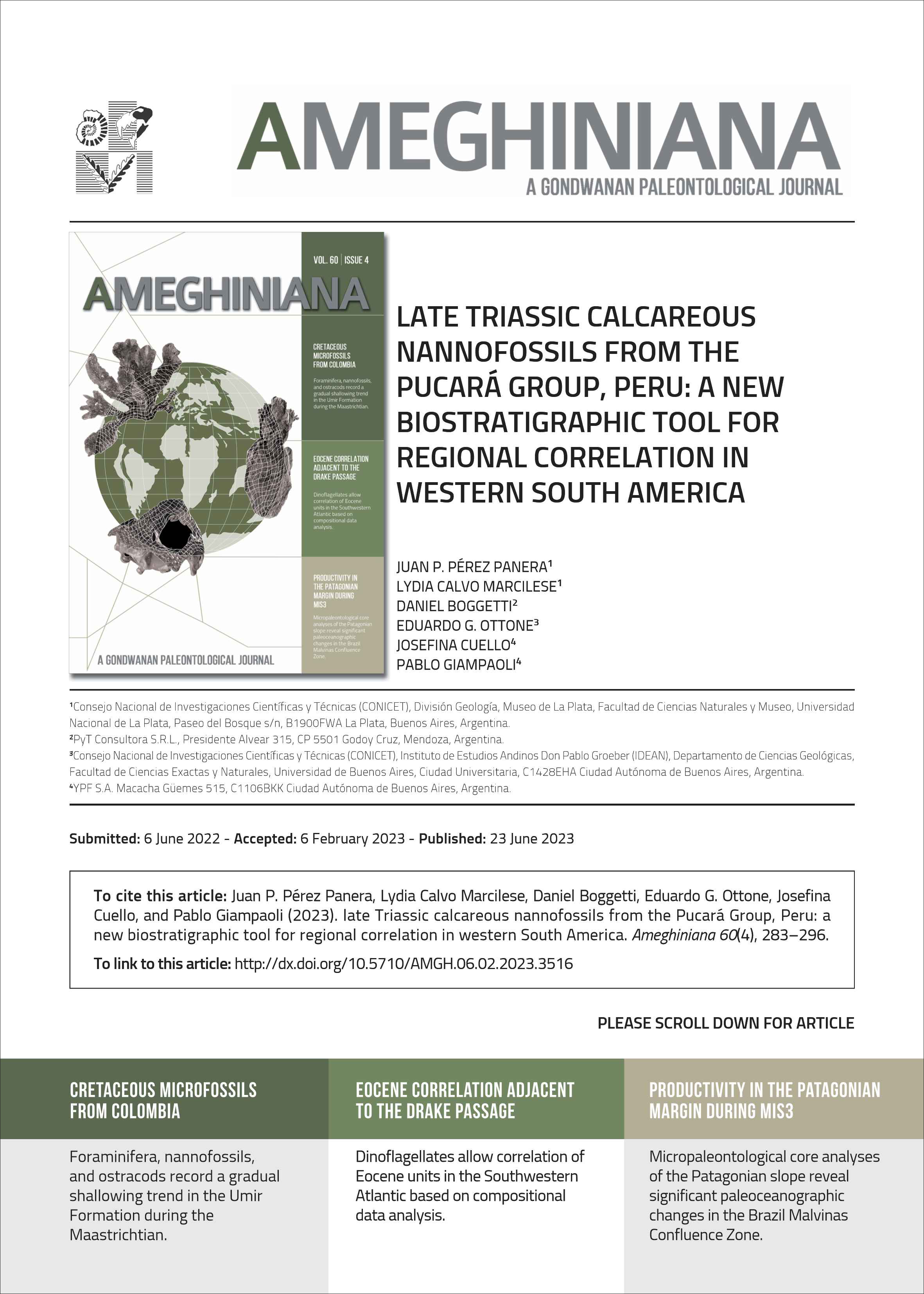LATE TRIASSIC CALCAREOUS NANNOFOSSILS FROM THE PUCARÁ GROUP, PERU: A NEW BIOSTRATIGRAPHIC TOOL FOR REGIONAL CORRELATION IN WESTERN SOUTH AMERICA
DOI:
https://doi.org/10.5710/AMGH.06.02.2023.3516Keywords:
Norian, Rhaetian, Biostratigraphy, Pucará Group, South AmericaAbstract
Micropaleontological investigations performed at four sections in the Pucará Group, Northwestern Peru, revealed the presence of Late Triassic calcareous nannofossils. Recovered assemblages are poorly preserved and show low abundance and species richness. However, these findings represent one of the three records outside the Tethyan Realm and allow independent biostratigraphic constraints for the Pucará Group. In the Cantera Tello section, Chambará Formation, calcareous nannofossil assemblages with Prinsiosphaera triassica and Prinsiosphaera sp. suggest a late Norian age for the lower part, and assemblages with P. triassica, Prinsiosphaera sp., Eoconusphaera zlambachensis, and Crucirhabdus minutus indicate a Rhaetian age for the upper part. In the Río Cocahuayco section, Chambará and Aramachay formations, only a few P. triassica and Prinsiosphaera sp. were recovered, indicating the Late Triassic. In Ricardo Palma section, Aramachay Formation, the presence of E. zlambachensis indicates a Rhaetian age. The Aguas Verdes section, Condorsinga Formation, yields an assemblage with P. triassica, Prinsiosphaera sp., E. zlambachensis, and the calcareous dinocyst Orthopithonella sp. indicating that, at least in this part of the basin, the lower section of this Formation is Rhaetian.

Additional Files
Published
Issue
Section
License
Authors publishing in Ameghiniana have the option of making their article freely available online. Authors opting for the Open Access must pay a fee of $300 (US dollars) to cover article-processing costs and to ensure the article is made open access. Please contact the Production Team after the acceptance of your manuscript if you are interested in making your article Open Access. This option implies by default a license Creative Commons Attribution Non-Commercial-NoDerivs License (CC BY NC ND). If your funding institution requires a different licensing option please communicate this to the Production Team after the acceptance of your manusctipt.










